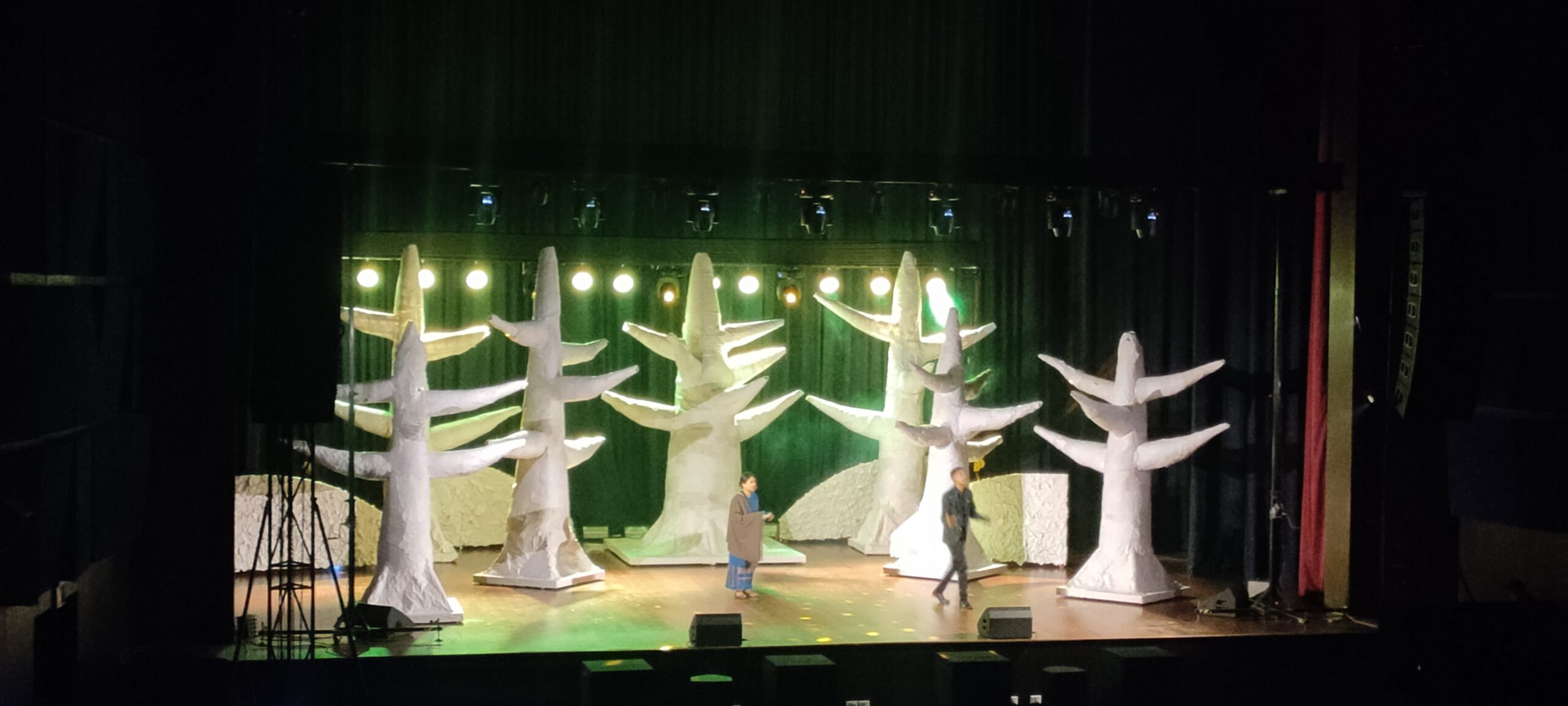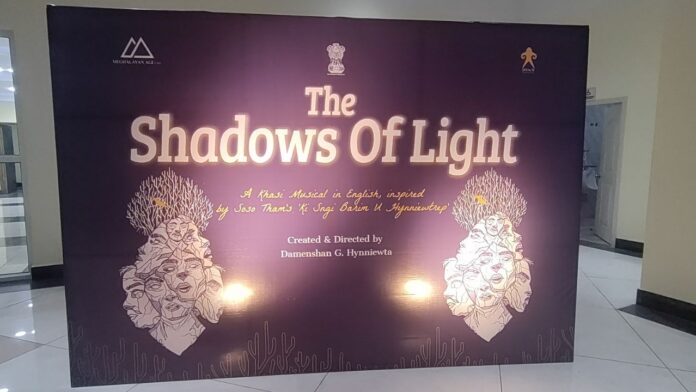By Adity Choudhury
SHILLONG:
Who knew the silence inside Black Box Theatre would unfold something new for Meghalaya?
That’s precisely, The Shadows of Light, a Broadway created and directed by Damenshan G Hynniewta. The Meghalayan Age Ltd., in partnership with INTACH Meghalaya Chapter, LARITI Performing Centre, and the Department of Arts and Culture, Government of Meghalaya brought this show that celebrates contemporary musical Theatre and the rich heritage of local storytelling.
Speaking about the play, the director said, “The Shadows of Light is a Khasi musical in English that harks the exodus of Ka Jaitbynriew U Hynniewtrep through the stories of seven people caught in the shadows of their identity and the promise of Light within their darkness. Loosely inspired by the writings of U Soso Tham in his magnum opus, Ki Sngi Barim U Hynniewtrep, the musical bears an original book and score of yearning, despair, hope and redemption.”
With bated breath, audience members soaked in every moment of dialogue delivery, songs, the set design and the light design. That last point is important to understand why the musical is titled, The Shadows of Light.
Hynniewta appears to have drawn inspiration from Stephen Sondheim, a celebrated doyen of musical theatre in the 20th century, in particular Into the Woods (1987). Notable among his productions are West Side Story (1957), Company (1970) and Sweeney Todd: The Demon Barber of Fleet Street (1979), noted for their dark wit and realism.
One wonders if the characters of the musical resonate with Hynniewta. In Into the Woods, several characters from fairy tales by Brothers Grimm (German cultural researchers from 18th century) converge (literally) into the woods as chaos ensues, amid choices and consequences of desires and curses – Little Red Riding Hood, Cinderella, Rapunzel, Jack – who encounter a childless couple as they enter the woods to break the curse on their family… a curse placed on them by the inevitable antagonist force, the witch.
In The Shadows of Light, seven characters drawn from Khasi folktales come across each other. Characters grapple with desire, love, loss and longing, drawn from U Sier Lapalang, Ka Sohlyngngem, and U Klew, among others.
Several elements are tied to each other – a mother’s quest for a son who will never return; the eternal waiting of doomed lovers U Rynniaw and Ka Sohlyngngem; decisions that will earn the wrath of the kur (clan); severed ties, a reminder of the U Lum Sohpet Bneng, to name a few – through the eyes of the narrator, U Myllung. As the Diengiei grows, each character faces moral dilemmas, contradictions, and ultimately realising the value of humanity.
Speaking on the ideation process Hynniewta highlighted the relevance of seven. “Seven is a poignant theme in the show. How the number reveals yet conceals… seven sins, seven colours of the rainbow, seven tribes, and my surname. You can see how we have played around that number.”
Across cultures, seven is regarded to be significant, carrying several meanings: completion, spiritual awareness, faith, acceptance, and contemplation.

At the heart of The Shadows of Light lies an introspective world. One wonders if the forest resides within the characters or vice versa. The woods, after all, leads (if not forces) the characters to face themselves and accept their ‘sense of reality’. Is it easy to let go? Is it easy to profess love that is socially unacceptable? How easy is it to break norms?
Each character undergoes an inner journey as the forest becomes a space of terrible imagination. The narrator wonders if the characters are real or reside within him as the forest closes in on them. Unable to escape (they try), U Thlen pays a visit, a hellish reminder of consequences when desires are unchecked.
Throughout the ages, folktales are repositories of culture. Hynniewta gracefully touches upon the jaitbynriew (community) through finding hope, should people choose to wield a powerful weapon, “empathy”, grounded in the tales of yore. The Diengiei becomes a bigger metaphor. How will the sun shine if we refuse to embrace the light within us? Yet, in the midst of chaos, there is calm. The characters, performed superbly by each actor, emerge wiser.
It is no surprise that the Khasi bard, U Soso Tham serves as an inspiration. Born in the nineteenth century when the colonial masters ruled over the land, the cultural icon sought refuge in the trees, the rivers and the mountains he dearly loved.
The light design truly amplified the shadows of light. Is the musical too mature for its audience?
Perhaps, no… only if one makes the choice to introspect on the past and how it informs the present.
In the woods, the line between ‘individual’ and ‘collective’ gets blurred. As Ka Sngi reminds U Bnai that he doesn’t need her light… it has been within him all along.


